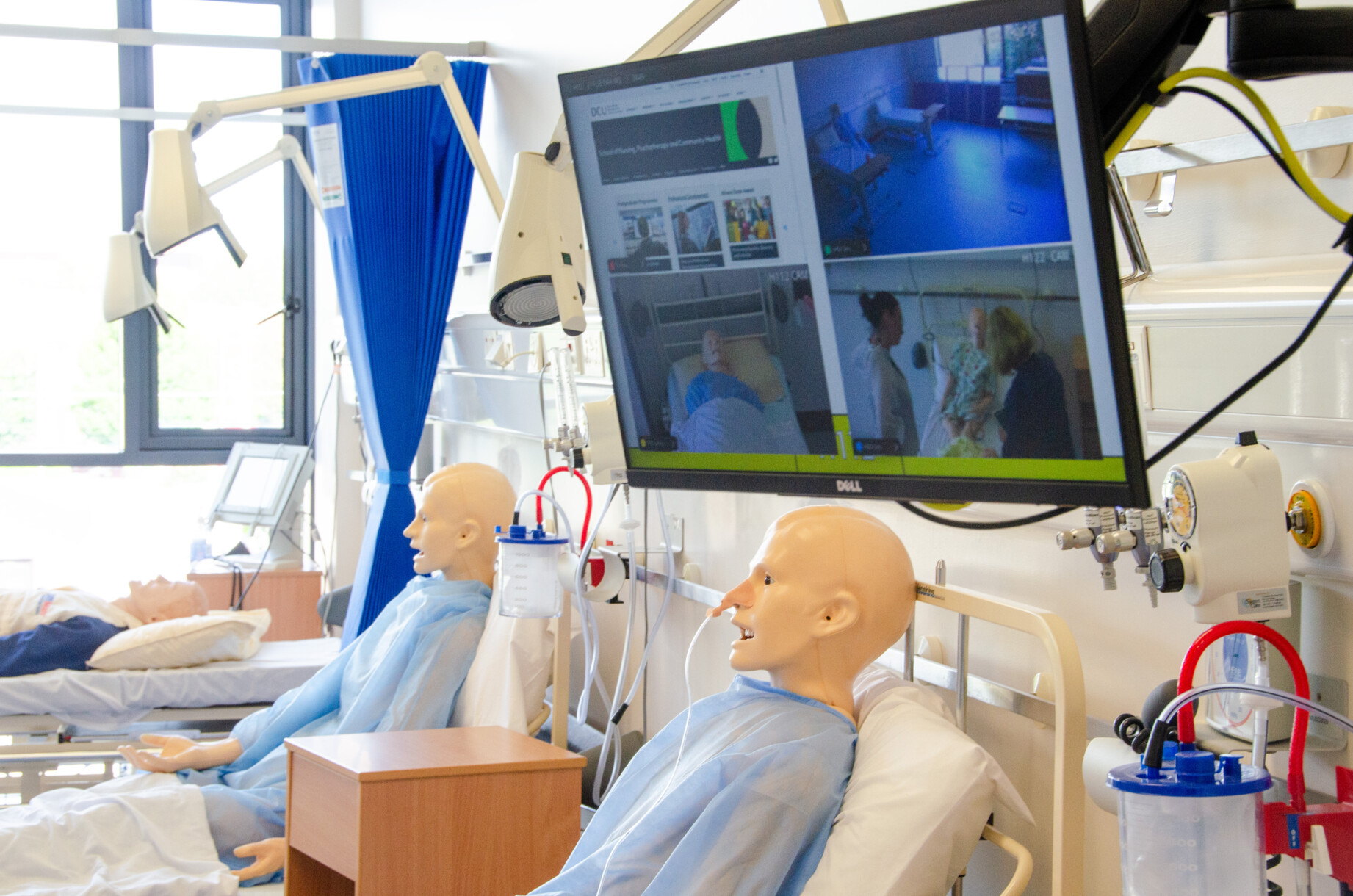Enhancing digital healthcare training and development
Supporting training of doctors, nurses, and other healthcare professionals
Introduction
WolfVision Cynap and Visualizer systems are advanced presentation and collaboration tools that have found significant application in healthcare training. They enhance training environments by making them more interactive, collaborative, and efficient, providing a platform that supports the digital transformation of healthcare education.
The goal of digital health in healthcare training is to prepare healthcare professionals for a modern healthcare environment that is increasingly reliant on digital technologies. It aims to enhance the quality of healthcare education, improve access to training resources, foster continuous professional development, and ultimately contribute to better patient outcomes.

Displaying digital healthcare materials
Interactive content sharing and collaboration: The Cynap system is a comprehensive solution for wireless presentation and collaboration, enabling users to share and annotate digital content wirelessly from their devices. In healthcare training, it facilitates interactive lectures and workshops where students and instructors can share medical images, data, and research findings in real-time, enhancing the learning experience.
Support for hybrid and remote learning: With the need for remote training capabilities, Cynap's support for video conferencing and integration with learning management systems (LMS) make it a powerful tool for delivering remote healthcare training. It allows for seamless integration of digital resources, live demonstrations, and remote participation, making healthcare education more accessible.
Interdisciplinary learning: Interdisciplinary learning in healthcare training is a pedagogical approach that integrates knowledge and skills from various medical and scientific disciplines to provide a comprehensive understanding of health and disease.
This approach is crucial in training healthcare professionals who can navigate the complexities of modern healthcare, where the lines between different specialties are increasingly blurred. Interdisciplinary learning fosters collaboration, critical thinking, and the ability to apply knowledge in diverse clinical situations. Both Cynap and Visualizer systems support interdisciplinary learning by enabling the easy integration and presentation of varied content types. This is essential in healthcare, where integrating knowledge from different specialties—such as medicine, pharmacology, and biomedical engineering—is crucial for comprehensive training.

Enhanced accessibility to learning materials
Streaming and webcasting: WolfVision's Cynap systems support streaming and webcasting, enabling healthcare educators to stream live surgical procedures, medical seminars, and interactive training sessions directly to students and professionals. This could include streaming to adjacent rooms, as detailed in our Dublin City University case study, or to participants remote-located anywhere in the world. This real-time engagement allows for immediate feedback and interactive learning experiences, making complex medical concepts more accessible and engaging.
Recording: Recording plays a pivotal role in enhancing learning outcomes, and WolfVision's Cynap systems excel in this area. Outstanding recording capability allows for the capture of multi-source multimedia content, including live demonstrations, procedures, and lecture material in unmatched clarity, making it an invaluable tool for educators and students alike. These recordings can be easily archived and accessed for future reference, enabling students to review complex procedures and lectures at their own pace, leading to better understanding and retention of information.

High-quality display of 'live' materials
Live demonstrations and Detailed Visualization: Visualizer systems are high-quality document cameras that can capture and display detailed images and live video of medical objects, documents, and even surgical procedures. In healthcare training, this capability is invaluable for demonstrating techniques, showing patient cases, or presenting microscopic images in fine detail to large audiences, whether in-room or remote-located.
Enhanced Practical Training: By providing real-time, high-definition visuals, Visualizers make it possible for students to observe procedures and techniques closely, which is critical in medical and surgical training. This hands-on approach helps students gain a better understanding of procedures and improves their skills more effectively.

Supporting Interdisciplinary learning
Interdisciplinary learning in healthcare training is a pedagogical approach that integrates knowledge and skills from various medical and scientific disciplines to provide a comprehensive understanding of health and disease. This approach is crucial in preparing healthcare professionals who can navigate the complexities of modern healthcare, where the lines between different specialties are increasingly blurred. Interdisciplinary learning fosters collaboration, critical thinking, and the ability to apply knowledge in diverse clinical situations.
Examples of Training Materials Presented
Case Studies: Real-world patient cases that require learners to apply knowledge from various disciplines such as pharmacology, pathology, and radiology to diagnose and treat patients.
Clinical Guidelines and Protocols: Documents that outline the standard procedures for treating specific conditions, incorporating insights from research, clinical trials, and expert consensus across specialties.
Surgical and Procedural Videos: High-definition videos of surgical procedures and medical techniques, providing a visual understanding of the processes, tools, and interdisciplinary teamwork involved.
3D Models and Simulations: Interactive models of human anatomy and disease processes, as well as simulations of clinical scenarios that require learners to make decisions based on a broad range of medical knowledge.
Research Articles and Evidence-Based Medicine Resources: Academic and clinical research findings that inform best practices in medicine, requiring an understanding of research methodology, biostatistics, and critical appraisal skills.

Presentation Methods for workforce development
Interactive Lectures and Workshops: Using multimedia presentations, real-time demonstrations, and collaborative discussions to engage learners in applying interdisciplinary knowledge.
Active learning sessions: Small group sessions where learners work together to solve complex clinical problems, requiring the integration of knowledge from various disciplines.
Clinical Skills Labs: Hands-on training sessions where learners practice clinical skills on mannequins, cadavers, or through the use of simulators, under the guidance of instructors from different specialties.
In all these scenarios, WolfVision systems and solutions support educators in providing the easy-to-use tools to deliver multi-source multimedia presentation content in a controlled manner to a student audience.
Whether you are streaming a demonstration of a surgical procedure, recording a simulation for on-demand viewing, providing a multi-screen active learning environment, or sharing documentation and diagrams onscreen, WolfVision systems provide the platform for dissemination of knowledge that healthcare educators can rely on.

